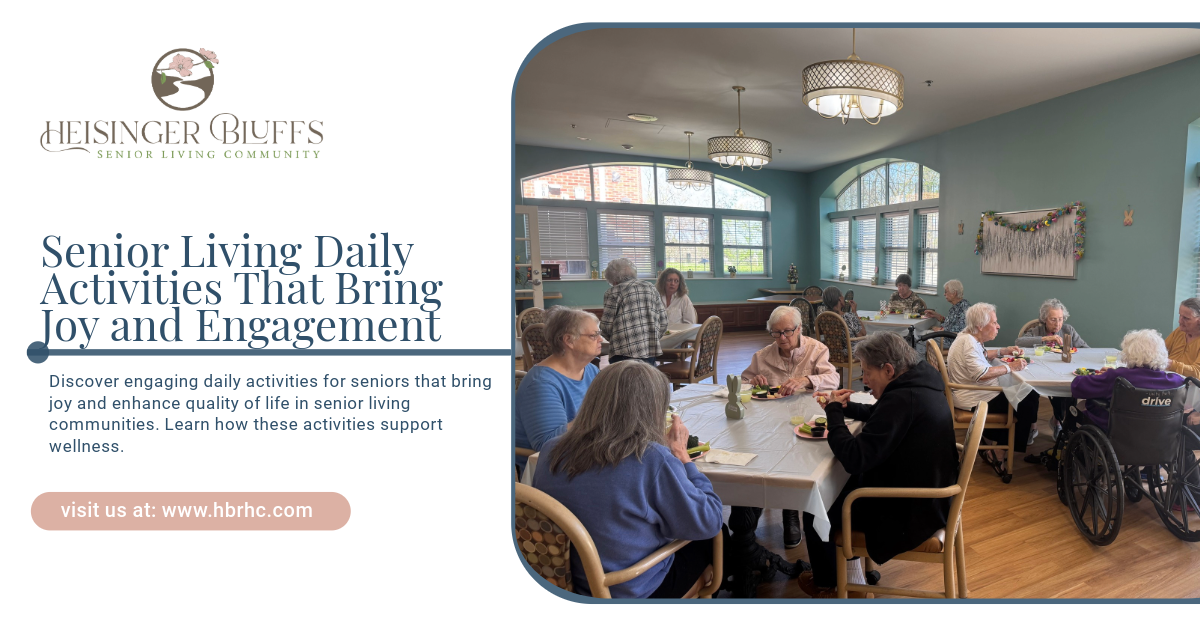How to Address Resistance or Reluctance to Senior Living

Resistance or Reluctance to Senior Living: What to Do
Transitioning to senior living can be a difficult process for both seniors and their families. Whether it's moving into an assisted living community, a memory care facility, or skilled nursing, the decision can be met with resistance or reluctance. Seniors may feel a sense of loss, fear, or uncertainty, which makes it challenging for them to accept the idea of leaving their home or familiar environment.
As a family member, it can be heartbreaking to see your loved one struggle with this transition. However, understanding the reasons behind their resistance and knowing how to approach the situation with empathy, patience, and open communication can make a significant difference.
In this blog post, we will explore common reasons for resistance to senior living and provide helpful strategies to address reluctance. By understanding your loved one’s feelings and approaching the conversation thoughtfully, you can ease their transition into a new living environment and ensure they feel supported throughout the process.
Why Do Seniors Resist Moving to Senior Living?
The decision to move to senior living can be a tough one for older adults, and there are several reasons why they may be hesitant. Understanding these reasons is the first step toward addressing the concerns and helping them feel more comfortable with the change.
1. Fear of Losing Independence
One of the most common reasons seniors resist moving to a senior living facility is the fear of losing their independence. Seniors may feel that moving to a community means they will lose control over their daily routines, decisions, and activities. This fear can create anxiety, especially if they’ve been independent for most of their lives.
2. Feeling of Isolation
Some seniors worry that moving into a senior living community will result in social isolation. They may fear that they’ll be separated from their family, friends, and the life they’ve known. The idea of living among strangers in a new environment can feel intimidating, especially if they’ve been accustomed to a tight-knit social circle.
3. Concerns About Health and Safety
For seniors who are dealing with health issues, the decision to move to senior living may stem from concerns about their medical needs and the level of care available. They may worry that the facility won’t be able to address their health conditions adequately or provide the care they require. Additionally, some seniors may fear that they will be treated like patients rather than individuals with unique needs and personalities.
4. Emotional Attachments to Their Home
Many seniors have lived in their homes for decades, and the thought of leaving behind a familiar environment filled with memories can be overwhelming. For some, their home represents stability, security, and independence. The emotional attachment to their home can create a strong reluctance to move into a senior living community.
5. Financial Concerns
Financial worries are also a common factor when it comes to resistance to senior living. Seniors may be uncertain about how they will afford the costs of a senior living community, especially if they have limited financial resources. The thought of selling their home, depleting savings, or using insurance benefits can add stress to an already emotional decision.
6. Uncertainty About the Transition Process
Even if seniors understand that moving to senior living may be beneficial for their well-being, they might still resist the change due to uncertainty about what to expect. They may have misconceptions about what life in a senior community will be like, leading to anxiety and reluctance to make the move.
How to Address Resistance or Reluctance to Senior Living
Now that we’ve discussed common reasons for reluctance, let’s look at practical strategies to help address these concerns and make the transition smoother for your loved one.
1. Have Open and Honest Conversations
The first step in addressing reluctance is to have an open, honest conversation with your loved one about their feelings. It’s important to acknowledge their concerns and let them know that their feelings are valid. Ask them what specifically is making them hesitant and listen without judgment.
Be patient and give them time to express their thoughts and emotions. By creating an open dialogue, you can better understand their fears and begin to address them one by one.
2. Highlight the Benefits of Senior Living
While seniors may focus on the drawbacks of moving, it’s helpful to highlight the positive aspects of senior living. Emphasize the opportunities for social interaction, access to health services, and the ability to engage in activities that promote mental and physical well-being.
For example:
- Socialization: Senior living communities offer social opportunities that help combat isolation, with activities, outings, and events that cater to different interests and hobbies.
- Safety and Security: Senior living communities are designed to ensure safety and security, with staff available 24/7 and emergency response systems in place.
- Personal Care: Residents have access to personalized care, whether it’s help with daily activities or assistance with health management, depending on their needs.
By focusing on the positive aspects, you can help your loved one see that senior living doesn’t mean losing independence, but rather gaining access to additional resources and support.
3. Encourage a Visit to the Facility
Sometimes, the idea of moving to a senior living community can seem abstract and intimidating. To help reduce anxiety, consider visiting the facility together. A tour of the community can help your loved one become familiar with the environment and meet the staff.
During the visit, encourage your loved one to ask questions about daily life, the services provided, and the community’s activities. They may find comfort in seeing the facility firsthand and realizing that it is a welcoming and supportive place.
4. Involve Them in the Decision-Making Process
To help your loved one feel more in control of the situation, involve them in the decision-making process. Ask them what they value most in a senior living community and what features are most important to them. By making them an active participant in the decision, you can help them feel more comfortable and empowered throughout the process.
Allowing your loved one to express preferences about the type of room they want, the amenities they prefer, and the activities they’re interested in can also help ease their concerns and make the transition feel less like a loss of control.
5. Address Financial Concerns
Financial concerns can play a significant role in reluctance to senior living. It’s important to have an honest conversation about the financial aspects of the move. Discuss the various payment options available, including long-term care insurance, Medicaid, or veterans’ benefits if applicable.
Some senior living communities offer financial counseling services to help families navigate payment options, so it may be helpful to ask about these resources during your visit.
6. Give Them Time to Adjust
It’s important to understand that acceptance and adjustment to senior living will take time. Don’t expect your loved one to embrace the change immediately. Be patient and provide ongoing emotional support as they navigate the transition. Encourage them to take small steps, such as joining in on a social activity or meeting new neighbors, to help them feel more comfortable.
7. Provide Reassurance and Emotional Support
Throughout the process, offer plenty of reassurance and emotional support. Let your loved one know that you will be there for them and that they are not alone in this transition. Visit often, stay connected, and be a constant source of support during the adjustment period.
Conclusion
Dealing with resistance or reluctance to senior living is a common challenge faced by many families. However, with open communication, patience, and a compassionate approach, you can help your loved one navigate this significant life change. By understanding their concerns and offering reassurance, you can make the transition to senior living a more positive experience.
If you’re considering senior living options, remember that there are resources available to help you and your loved one make an informed decision. The right senior living community can provide the care, support, and social opportunities needed to help seniors live their best lives.
At Heisinger Bluffs, we understand the emotional and practical challenges that come with transitioning to senior living. Our compassionate team is here to support you and your loved one every step of the way. Contact us today to learn more about our community and how we can assist you in making a smooth transition.
Frequently Asked Questions
How can I help my loved one feel more comfortable with the idea of moving to senior living?
Start by having open and honest conversations, addressing their concerns, and highlighting the benefits of senior living. Involve them in the decision-making process and consider visiting the facility together to ease their worries.
What are some signs that my loved one may need to move to senior living?
Signs that your loved one may need senior living include difficulty managing daily activities, increasing health issues, memory loss, or frequent falls. If you notice that they need help with personal care or are becoming isolated, it might be time to consider a senior living community.
How long does it typically take for someone to adjust to a senior living community?
Adjustment time varies by individual, but it may take several weeks or even months for your loved one to feel comfortable and fully adjust. Be patient and provide ongoing support as they transition into their new environment.











